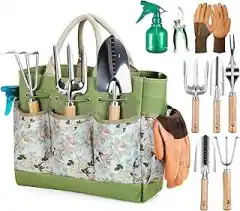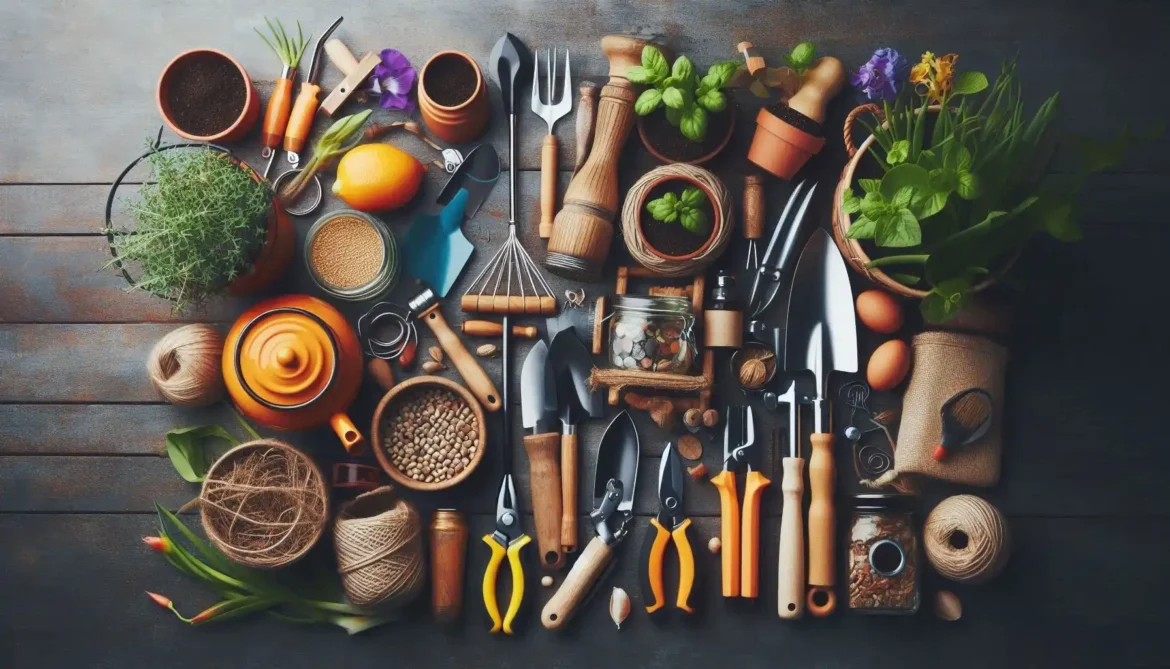
From Roots to Blooms: Building the Perfect Gardener’s Arsenal
As gardening enthusiasts, we are always on the lookout for the best tools to make our gardening experience more efficient and enjoyable. With the numerous options available in the market, it can be overwhelming to choose the right tools for our gardening needs. In this article, we will compare a list of gardening tools available in the market, both manual and electric, and discuss their merits and demerits.
Introduction to Gardening Tools
Gardening tools are an essential part of any gardening activity. They help us to prepare the soil, plant seeds, water plants, and maintain our gardens. With the advancement of technology, gardening tools have evolved from simple manual tools to sophisticated electric and automated tools. As we explore the various options available, we will examine the benefits and drawbacks of each type of tool.
“Gardening is a labor of love, and the right tools can make all the difference in the world.”
As we delve into the world of gardening tools, we will consider the following factors:
- Ease of use
- Efficiency
- Cost
- Maintenance
- Environmental impact
Manual Gardening Tools
Manual gardening tools are the traditional choice for many gardeners. They are simple, cost-effective, and environmentally friendly. Some common manual gardening tools include:
| Tool | Description | Merits | Demerits |
| Hoe | Used for weeding and cultivating soil | Inexpensive, easy to use, and effective for small gardens | Can be time-consuming and labor-intensive for large gardens |
| Rake | Used for leveling and smoothing soil | Versatile, easy to use, and effective for leaf removal | Can be heavy and difficult to maneuver |
| Pruning Shears | Used for pruning and trimming plants | Precise, easy to use, and effective for small plants | Can be time-consuming and labor-intensive for large plants |
Some of the benefits of manual gardening tools include:
- Low cost: Manual gardening tools are often inexpensive and can be purchased at a low cost.
- Environmentally friendly: Manual gardening tools do not require any electricity or fuel, making them an environmentally friendly option.
- Easy to use: Manual gardening tools are often simple and easy to use, requiring minimal instruction or training.
However, manual gardening tools also have some drawbacks, including:
- Time-consuming: Manual gardening tools can be time-consuming and labor-intensive, especially for large gardens.
- Physically demanding: Manual gardening tools can be physically demanding, requiring manual labor and effort.
Electric Gardening Tools
Electric gardening tools are a popular choice for many gardeners. They are efficient, convenient, and can save time and effort. Some common electric gardening tools include:
| Tool | Description | Merits | Demerits |
| Lawn Mower | Used for cutting grass | Efficient, convenient, and time-saving | Expensive, noisy, and requires maintenance |
| Trimmer | Used for trimming and edging plants | Precise, easy to use, and effective for small plants | Can be expensive and requires maintenance |
| Hedge Trimmer | Used for trimming and shaping hedges | Efficient, convenient, and time-saving | Can be expensive and requires maintenance |
Some of the benefits of electric gardening tools include:
- Efficiency: Electric gardening tools are often faster and more efficient than manual tools, saving time and effort.
- Convenience: Electric gardening tools are often easy to use and require minimal manual labor.
- Precision: Electric gardening tools can be precise and accurate, making them ideal for trimming and pruning plants.
However, electric gardening tools also have some drawbacks, including:
- Expensive: Electric gardening tools can be expensive, especially high-quality models.
- Maintenance: Electric gardening tools require regular maintenance, including cleaning and servicing.
- Environmental impact: Electric gardening tools can have a negative environmental impact, including noise pollution and carbon emissions.
Comparison of Manual and Electric Gardening Tools
As we compare manual and electric gardening tools, we can see that each type of tool has its own merits and demerits. Manual gardening tools are inexpensive, environmentally friendly, and easy to use, but can be time-consuming and physically demanding. Electric gardening tools are efficient, convenient, and precise, but can be expensive, noisy, and require maintenance.
Here are some key differences between manual and electric gardening tools:
- Cost: Manual gardening tools are often less expensive than electric gardening tools.
- Efficiency: Electric gardening tools are often faster and more efficient than manual tools.
- Environmental impact: Manual gardening tools are environmentally friendly, while electric gardening tools can have a negative environmental impact.
- Maintenance: Electric gardening tools require regular maintenance, while manual gardening tools require minimal maintenance.
Tips for Choosing the Right Gardening Tools
As we choose the right gardening tools for our needs, we should consider the following factors:
- Garden size: For small gardens, manual gardening tools may be sufficient. For large gardens, electric gardening tools may be more efficient.
- Gardening style: For precision gardening, electric gardening tools may be preferred. For casual gardening, manual gardening tools may be sufficient.
- Budget: For gardeners on a budget, manual gardening tools may be a more affordable option.
- Environmental concerns: For gardeners concerned about the environment, manual gardening tools may be a more eco-friendly option.
Some popular gardening tools that are worth considering include:
- Gardening gloves: Protect hands from thorns and dirt.
- Gardening kneeler: Provides comfort and support while gardening.
- Gardening cart: Helps to transport plants and tools around the garden.
- Soil test kit: Helps to determine soil pH and nutrient levels.
- Watering can: Helps to water plants efficiently and effectively.
Conclusion
As we conclude our comparison of manual and electric gardening tools, we can see that each type of tool has its own merits and demerits. Manual gardening tools are inexpensive, environmentally friendly, and easy to use, but can be time-consuming and physically demanding. Electric gardening tools are efficient, convenient, and precise, but can be expensive, noisy, and require maintenance. By considering our gardening needs, budget, and environmental concerns, we can choose the right gardening tools for our gardens and enjoy a rewarding and fulfilling gardening experience.
Here are some final tips for gardeners:
- Start small: Begin with a small garden and gradually expand as you gain experience.
- Experiment with different tools: Try out different gardening tools to find what works best for you.
- Maintain your tools: Regularly clean and maintain your gardening tools to extend their lifespan.
- Learn from others: Share tips and advice with fellow gardeners to learn new techniques and improve your gardening skills.
- Have fun: Gardening is a labor of love, so enjoy the process and have fun!
- FAQs
- Q: What are the basic gardening tools that I need to know how to use?
- A: The basic gardening tools that you should know how to use include a shovel, trowel, pruners, rake, and hoe. Additionally, if you plan to use electric gardening tools, you should also be familiar with how to use a lawn mower, string trimmer, and hedge trimmer.
- Q: How do I properly use a shovel in my garden?
- A: To properly use a shovel, make sure to wear gloves and stand with your feet shoulder-width apart. Hold the shovel with both hands, one hand on the handle and the other on the blade, and dig into the soil at a 45-degree angle. Lift the soil carefully, using your legs to lift the weight, and avoid bending or twisting.
- Q: What are some safety tips for using electric gardening tools?
- A: Some safety tips for using electric gardening tools include wearing protective gear such as gloves, safety glasses, and closed-toe shoes. Make sure to read the manufacturer’s instructions before using the tool, and avoid using electric tools in wet or damp conditions. Additionally, keep children and pets away from the area where you are using electric tools, and never leave them unattended.
- Q: How do I safely use a lawn mower?
- A: To safely use a lawn mower, make sure to wear protective gear such as gloves, safety glasses, and closed-toe shoes. Check the mower for any damage or wear before using it, and make sure the blade is securely attached. Always mow in a consistent pattern, and never mow up or down a slope. Keep children and pets away from the area where you are mowing, and never leave the mower unattended while it is running.
- Q: What should I do if I encounter a problem while using an electric gardening tool?
- A: If you encounter a problem while using an electric gardening tool, such as a jammed blade or a frayed cord, turn off the tool immediately and unplug it. Check the tool for any damage or wear, and make any necessary repairs before using it again. If you are unsure of how to fix the problem, consult the manufacturer’s instructions or contact a professional for assistance.
- Q: How do I store my gardening tools to keep them in good condition?
- A: To store your gardening tools and keep them in good condition, make sure to clean them thoroughly after each use and dry them with a towel. Store tools in a dry, secure location, such as a shed or garage, and hang them on a wall or place them in a designated tool holder. Keep electric tools unplugged and out of reach of children and pets, and check them regularly for any damage or wear.
- Q: Are there any specific safety precautions I should take when using a string trimmer?
- A: Yes, when using a string trimmer, make sure to wear protective gear such as gloves, safety glasses, and closed-toe shoes. Keep loose clothing and long hair tied back, and avoid wearing jewelry that could get caught in the trimmer. Always use the trimmer in a well-ventilated area, and avoid breathing in dust and debris. Keep children and pets away from the area where you are trimming, and never touch the trimmer’s cutting head with your hands or feet.
- Q: How often should I maintain my electric gardening tools to ensure they continue to function safely and efficiently?
- A: You should maintain your electric gardening tools regularly to ensure they continue to function safely and efficiently. Check the tools for any damage or wear before each use, and make any necessary repairs. Clean and dry the tools after each use, and store them in a dry, secure location. Additionally, follow the manufacturer’s instructions for maintenance and upkeep, and consider having your tools serviced by a professional if you are unsure of how to maintain them.
Disclaimer: The content on this blog is for informational purposes only. Author’s opinions are personal and not endorsed. Efforts are made to provide accurate information, but completeness, accuracy, or reliability are not guaranteed. Author is not liable for any loss or damage resulting from the use of this blog. It is recommended to use information on this blog at your own terms.





